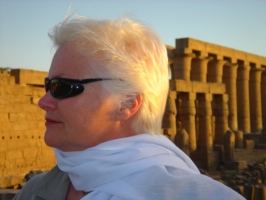
Castle Cornet, Island of Guernsey, facing north on the English Channel
The bestselling literary phenom, The Guernsey Literary and Potato Peel Pie Society, was set here. Read by perhaps every book club in the United States—including mine in Salt Lake City–this book (by Mary Ann Shaffer and Annie Barrows) is set during the occupation of the island by Nazi soldiers starting in 1940. Various monuments along Guernsey’s waterfront commemorate the liberation of the island in 1944.
A grim and true part of the book was the description of the Todt (after Nazi engineer, Fritz Todt, though Tod is also “death” in German) workers brought to Guernsey by the Nazis. These conscripts—about 16,000 men and boys from Germany’s Occupied Territories, political prisoners, Russian prisoners of war, and 1% of the German men who could not pass the physical—were often worked to death as part of Heinrich Himmler’s plan of “Death by Exhaustion.†I saw no memorials to these conscripts.

Fritz Todt, Nazi engineer
I boarded the Condorferries express in Weymouth, sitting in an assigned seat, rolling and dipping for 2 ½ hours east across the English Channel, to Guernsey, a Channel Island. No passport is required, as Guernsey belongs to England. Some passengers were sick from the bumpy ride, though I am happy to report my stomach was fine, and the return trip was smooth as fine custard.
The French writer, Victor Hugo (1802–1885), lived with his wife, Adele, in Hauteville House, and apparently, with his mistress Juliette Drouet, on Guernsey from 1855 to 1870. Hugo wrote Les Miserables while there and set Les Travailleurs de la mer (Toiler of the Sea) on the island.
Hauteville House is a lemon -yellow rowhouse on rue du Hauteville, up from the harbor. Hauteville House is not open to the public. Even a photo opp is denied since the plaque on the wall is behind a tall, black, iron fence. There is a computer printout in a plastic sleeve hanging in one of the windows reminding visitors the house is not a museum. Okay. Maintaining even a a small museum is expensive and labor-intensive, plus it denies housing space to Guernseyans. But I still think someone could have tried a little harder.

Auguste Rodin’s marble bust of victor Hugo
Guernsey is seven miles long, five miles wide, with a present–though shifting–population of about 65,000, and the capital is St. Peter Port. Originally part of Duchy of Normandy, given to England when William, Duke of Normandy, conquered England and kept the Channel Islands. guernsey’s official languages at French and English.
Guernsey Bailiwick’s inhabited Channel Islands are Alderney, Guernsey, Herm, and Sark (the main islands); Jethou, Brecqhou (Brechou), and Lihou. All of these are “states†of Guernsey except for Jersey, which is its own Bailiwick. The uninhabited islets are the Minquiers, Écréhous, Les Dirouilles ,and Les Pierres de Lecq (the Paternosters), of the Bailiwick of Jersey, and Burhou and the Casquets lie off Alderney. The larger islands have the -ey suffix.
Food specialties of Guernsey include lobster, brill, and other varieties of fish, mixed in with Italian, British, and French dishes. I had spaghetti carbonara with my pot of tea at the Mora Restaurant at the tail end of the arts festival along the quays. Or perhaps it was the rainstorm itself that signaled the tail end of the arts festival.
The Castle Cornet is an imposing collection of dark, stone buildings at the mouth of the harbor. Now you can walk by the castle on your way to the lighthouse, but originally it was a mile off the Guernsey shore and was accessible on foot only at the lowest of tides. The Nazis used this 13th century castle as headquarters and a garrison for the soldiers during the occupation. One can certainly imagine having to make potato peel pie (the mashed potatoes were sweetened with beets, and potato peels made up the crust) since many, many people (even including, to some extent, the wretched Todt workers) were being fed off the products of one small island.
In 1066 when William Duke of Normandy became William I, King of England, the Channel Islands became possessions of the English Crown. In 1204, King John lost control of Normandy, but the islands remained English. Still needing to defend the Channel Islands against the French, John then started construction of Castle Cornet.As I walked easily along a paved causeway to the castle, I passed the fishmongers shop and a shallow area along the waterfront where people were “messing about in boats†(to quote otter in Wind in the Willows), even in the spitting rain. Not much stops a boatman.
The Old Quarter (complete with an iron arch that says exactly that) winds through pubs, cake shops, and beauty salons along narrow, windy, cobbled streets and steep stairways, much like you see in Latin Quarter Paris.
The ferry I took to return to Weymouth had just come from Jersey with quite a few passengers getting off at Guernsey. My fellow passengers, one dog, and I getting on the Guernsey ferry to Weymouth numbered about 10. Guernsey was lovely, walkable, festive, and filled with literary and military history. All this introvert needed.

Post a Comment